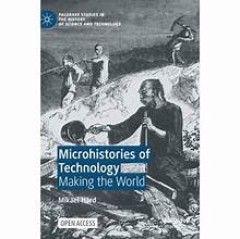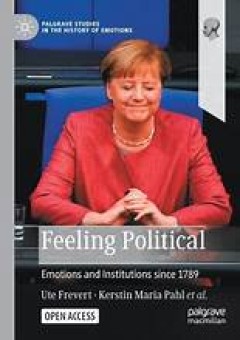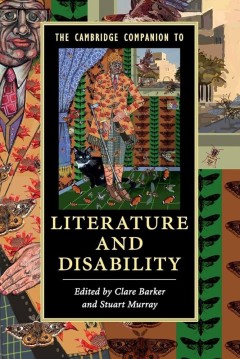Filter by

Die Lebenserinnerungen von Carl Patsch
Carl Patsch (*1865 in Kovač/Böhmen, †1945 in Wien) ist einer der Begründer der balkanrömischen Provinzialarchäologie. Im von der k.u.k. Monarchie besetzten und verwalteten Bosnien-Herzegowina diente er der Forschung und Wissenschaftspolitik als Kustos am Bosnisch-Herzegowinischen Landesmuseum (Zemaljski muzej Bosne i Hercegovine) und als Gründungsdirektor des Bosnisch-Herzegowinischen I…
- Edition
- 1
- ISBN/ISSN
- 978-3-7329-9326-0
- Collation
- 318
- Series Title
- DigiOst
- Call Number
- -

Microhistories of Technology
In this open access book, Mikael Hård tells a story of how people around the world challenged the production techniques and products brought by globalization. Retaining their autonomy and freedom, creative individuals selectively adopted or rejected modern gadgets, tools, and machines. In standard historical narratives, globalization is portrayed as an unstoppable force that flattens all obsta…
- Edition
- 1
- ISBN/ISSN
- 978-3-031-22813-1
- Collation
- -
- Series Title
- Palgrave Studies in the History of Science and Technology
- Call Number
- XX, 290

Feeling Political
Historicizing both emotions and politics, this open access book argues that the historical work of emotion is most clearly understood in terms of the dynamics of institutionalization. This is shown in twelve case studies that focus on decisive moments in European and US history from 1800 until today. Each case study clarifies how emotions were central to people’s political engagement and its …
- Edition
- 1
- ISBN/ISSN
- 978-3-030-89858-8
- Collation
- -
- Series Title
- Palgrave Studies in the History of Emotions
- Call Number
- XIX, 390

Model and Mathematics: From the 19th to the 21st Century
This open access book collects the historical and medial perspectives of a systematic and epistemological analysis of the complicated, multifaceted relationship between model and mathematics, ranging from, for example, the physical mathematical models of the 19th century to the simulation and digital modelling of the 21st century. The aim of this anthology is to showcase the status of the mathe…
- Edition
- -
- ISBN/ISSN
- 978-3-030-97833-4
- Collation
- -
- Series Title
- -
- Call Number
- -

Entwicklung von Methoden zur abstrakten Modellierung von Automotive Systems-o…
Diese Open-Access-Publikation bietet zu Beginn einen Einblick in die Grundlagen der modellbasierten Systementwicklung. Dabei analysiert die Publikation aktuell bestehende methodische Defizite in der Automotive System-on-Chip (SoC) Entwicklung. Anschließend beschreibt die Publikation, eine neue modellbasierte Entwicklungsmethode, mit deren Hilfe es ermöglicht wird die wachsenden Herausforderun…
- Edition
- -
- ISBN/ISSN
- 978-3-658-38437-1
- Collation
- -
- Series Title
- -
- Call Number
- -

Schoolteachers and the Nordic model : comparative and historical perspectives
Guru Sekolah dan Model Nordik meneliti kekhasan budaya profesi guru Nordik dan pelatihan guru dibandingkan dengan contoh-contoh dari Eropa dan Amerika Utara. Buku ini mengeksplorasi konsep 'budaya guru' ini sebagai berbagai dimensi identitas profesional, pola rekrutmen, status sosial, nilai, dan pengetahuan guru. Buku ini mempertimbangkan bagaimana latar belakang sosial budaya guru Nordik dan p…
- Edition
- -
- ISBN/ISSN
- 9781003082514
- Collation
- 1 online resource (260 Pages)
- Series Title
- -
- Call Number
- 948.07 LAR s

From Decoding Turbulence to Unveiling the Fingerprint of Climate Change
This open access book serves as a reference for the key elements and their significance of Klaus Hasselmann's work on climate science and on ocean wave research, all based on a rigorous and deeply physical thinking. It summarizes the original articles (mostly from the 1970 and 1980s; some of which are hard to find nowadays) and brings them in a present-day context. From 1975 until 2000, he was …
- Edition
- -
- ISBN/ISSN
- 978-3-030-91716-6
- Collation
- -
- Series Title
- -
- Call Number
- -

Literature and disability
- Edition
- -
- ISBN/ISSN
- 9781315726595
- Collation
- -
- Series Title
- -
- Call Number
- -
- Edition
- -
- ISBN/ISSN
- 9781315726595
- Collation
- -
- Series Title
- -
- Call Number
- -

The Routledge Companion to Butoh Performance
- Edition
- -
- ISBN/ISSN
- 9781315536132
- Collation
- -
- Series Title
- -
- Call Number
- -
- Edition
- -
- ISBN/ISSN
- 9781315536132
- Collation
- -
- Series Title
- -
- Call Number
- -

Japanese diplomacy and East Asian international politics, 1918-1931
Introduction: Japanese Diplomacy and Interwar East Asia's "Four Waves of International Change" -- The First Wave of International Change and Hara Diplomacy: September 1918 to November 1921 -- The Hara Government -- The Creation of the Washington System and the Second Wave of International Change: November 1921 to January 1924 -- The Takahashi, Katō Tomosaburō, and Yamamoto Governments -- Ne…
- Edition
- -
- ISBN/ISSN
- 9781032675985
- Collation
- -
- Series Title
- -
- Call Number
- -
 Computer Science, Information & General Works
Computer Science, Information & General Works  Philosophy & Psychology
Philosophy & Psychology  Religion
Religion  Social Sciences
Social Sciences  Language
Language  Pure Science
Pure Science  Applied Sciences
Applied Sciences  Art & Recreation
Art & Recreation  Literature
Literature  History & Geography
History & Geography